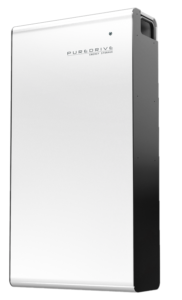We all cherish the idea of swift EV charger installations, making shifting to an electric vehicle (EV) lifestyle more effortless. However, have you ever pulled up to a charger to realise your car isn’t charging as fast as promised? Let’s discuss why.
The Confusion Behind Charging Times
Electric vehicles (EVs) are paving the way for a more sustainable and environmentally friendly future. However, one of the most significant concerns, especially for new and prospective EV owners, revolves around charging times. Despite the rapid advancements in EV technology, understanding why charging takes a certain amount of time and may not always match expectations can be perplexing. Let’s look into the underlying factors and challenges contributing to this confusion.
A Web of Terminologies
First and foremost, the EV industry is riddled with technical jargon that can easily overwhelm someone new to the space. Terms like kilowatt (kW), kilowatt-hour (kWh), AC (Alternating Current), DC (Direct Current), and fast charging are just a few of the terms EV owners must familiarise themselves with. Often, confusion arises when differentiating between kW and kWh, with the former denoting charging power and the latter representing battery capacity.
1 – Misleading Advertisements
Sometimes, charging station manufacturers or EV brands might advertise “up to” certain speeds. For instance, a charging station may promote “up to 150 kW” charging, but that doesn’t mean every EV can utilise that full power. Hence, even if a station claims to be ultra-fast, the actual charging speed an EV user experiences can be quite different.
2 – Complex Mix of Variables
Unlike traditional vehicles, where refuelling is relatively straightforward, EV charging depends on many factors. These can range from the vehicle’s battery size and health, the charging station’s capabilities, the state of charge, weather conditions, and even the car’s age. The sheer number of variables in play can make it hard to predict exact charging times consistently.
3 – Real-world vs. Theoretical Charging Speeds
Manufacturers often provide theoretical maximum charging speeds. However, in the real world, factors such as simultaneous charging (where multiple vehicles share the same charger or power source), battery temperature, and even sitting in the car using other features can all contribute to extended charging times.
4 – State of Charge (SoC) Anomalies
For many new EV owners, the concept that charging from 20% to 40% might be faster than 80% to 100% can be confusing. This tapering of charging speed at higher SoCs can lead to unpredictable wait times, especially for those using the consistent refuelling time of fossil fuel-powered vehicles.
5 – Infrastructure Inconsistencies
While some cities have the latest fast-charging infrastructure, others may have outdated or less efficient chargers. Hence, an EV owner’s experience in one town might be entirely different in another, leading to inconsistent perceptions of charging times.
Electric Car Charging Speed Simplified
Understanding how long it’ll take to charge your electric vehicle (EV) is vital for planning trips and daily commutes. With a straightforward formula, you can determine the approximate charging time of your EV:
Battery size (kWh) ÷ Charger power (kW) = Charging time (hours)
Let’s break this down with a few examples:
- Renault Zoe: With a battery capacity of 52kWh, when attached to a 50kW rapid charger, it takes just over an hour to fully charge the Zoe.
- Kia e-Niro: With a larger 64kWh battery, the Kia e-Niro will take around one and a half hours when using the same 50kW charger.
- Tesla Model 3 Long Range: This model has a 70kWh battery, giving an approximate charging time of one hour and forty minutes with a 50kW charger. However, Tesla’s Supercharger network offers super fast charging speeds, providing up to 172 miles of range in a mere 15 minutes.
Remember, the actual charging time can vary based on the battery’s state, charger efficiency, and other environmental factors. For a more accurate and EV-specific charging time, consider using a dedicated EV charger installation at home, consulting with a Zappi installer, or looking into home electric vehicle charger installation options. An EV home charger lets you conveniently charge car at home, ensuring a full battery whenever you’re ready to hit the road.
Factors Influencing Your EV Charging Time
As electric vehicles (EVs) lead us to a greener tomorrow, new and potential EV enthusiasts often grapple with understanding charging durations. Even with the leaps in EV technology, grasping why it takes varying lengths of time to charge, sometimes contrary to expectations, can be a puzzle. Let’s look into unravelling the factors adding to this puzzle.
1 – Battery Capacity
- Definition: The battery capacity, often measured in kilowatt-hours (kWh), determines how much energy an EV’s battery can store.
- Influence on Charging: Larger batteries naturally take longer to charge, from empty to full. However, they may offer a more extended driving range. It’s essential to note that most EV users seldom charge from empty to fully charged, so real-world charging times can be shorter than expected.
2 – Charging Power (kW) and Charger Type
- Definition: The power output of a charger is typically measured in kilowatts (kW). Level 1 (standard household outlet), Level 2 (dedicated EV charging station), and DC fast chargers are common charger types.
- Influence on Charging: A Level 1 charger might take over 24 hours to fully charge a large EV battery, while a Level 2 charger might do the same job in 4-8 hours. DC fast chargers can charge some EVs up to 80% in under an hour. Still, their availability might be limited and repeated fast charging can impact battery health.
3 – State of Charge (SoC)
- Definition: The current charge level of the EV battery, often expressed as a percentage.
- Influence on Charging: Batteries charge faster when they’re at a lower SoC and tend to slow down as they approach 100% to protect battery health. This phenomenon is why some users might experience rapid charging from 20% to 60% but a slower rate from 80% to 100%.
4 – Battery Health and Age
- Definition: An EV’s battery capacity can degrade over time and with repeated charging cycles.
- Influence on Charging: Aged or degraded batteries might not only hold less charge (reducing range) but can also experience altered charging profiles, potentially leading to slower charging times or requiring more frequent charging.
5 – Temperature and Weather Conditions
- Definition: Temperature plays a crucial role in battery chemistry and performance.
- Influence on Charging: Cold temperatures can reduce battery efficiency and slow charging. Conversely, very high temperatures can also be detrimental. They might cause the EV to limit charging speeds to protect the battery. Some EVs come with thermal management systems to mitigate these effects.
6 – Vehicle and Charger Compatibility
- Definition: Not all EVs can utilise the full power output of every charger, and vice versa.
- Influence on Charging: An EV might be capable of accepting a higher charge rate than a charger can deliver, or a charging station might offer more power than the EV can handle. In either case, the charging time is influenced by the lower two values: the car’s maximum accepted charging rate or the charger’s maximum output.
Questions Looming on Your EV Journey
Are you considering an EV home charger to charge your car at home? Are you mulling over whether to engage a Zappi installer? There are numerous considerations on this green journey. Questions about home charging, cables, and on-the-go charging solutions may arise besides charging times. Always turn to a professional EV charger installer for these and more, ensuring your electric mobility transition is as smooth as possible.
Conclusion
Transitioning to an EV-rich future involves more than just the mechanics of EV charger installation. The efficiency of your charge, the longevity of your battery, and the nuances of electric vehicle charger installation are all intertwined in this green journey.
By understanding the factors influencing your charging times, you can better navigate and enhance your EV experience. Ready to power up and drive into a cleaner tomorrow?









